And, that is precisely what world-renowned artist, Kumi Yamashita, does.
Using only light, shadow and simple materials, she creates intricate pieces that come together as one, beautifully.
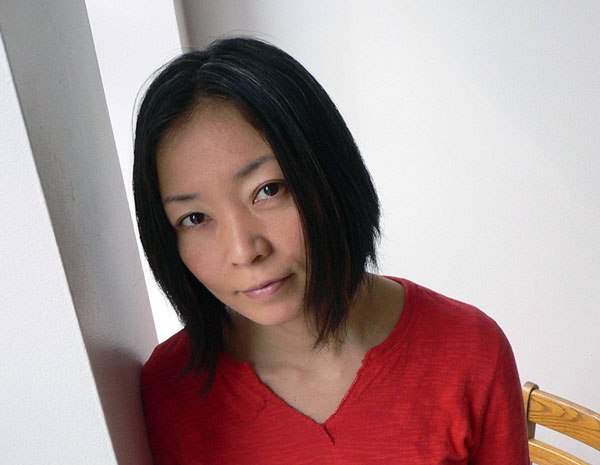
(Image source: www.designboom.com)
Kumi Yamashita was born in Takasaki, Japan in 1968. With a mother who studied fashion design and a father who was a professional sculptor and industrial designer, her upbringing was very supportive and nurturing in making her the artist she is today. Her mother would design her and her sisters’ clothing. While her father, who was strongly influenced by traditional Japanese crafts, would communicate with his daughters through beautiful drawings.
It wasn’t long before Kumi recognized her love for drawing and creating things. And, her parents never once questioned her direction when she chose to participate in a high school student exchange program in the United States, eventually leading her to obtain her Bachelors of Fine Arts from Cornish College of the Arts in Seattle, and Masters of Fine Arts from Glasgow School of Art in Scotland.
She now resides in New York City, where she creates her unique art for a living.
The art of lights and shadows
In it’s simplest form, Kumi’s art can be described as sculpting with light and shadow. By constructing single or multiple objects and placing them in relation to a single light source, she creates cohesive pieces that are comprised of material (the solid objects) and immaterial (light or shadow).
Her fascination with light and shadow began in childhood, when she would sit on the patio of her family home in the late afternoons and gaze at the shadows of the swaying olive tree branches cast by the setting sun. She explains, “the color of the light was gradually changing from warm orange to cool blue as the shadow of the tree stretched and faded away. In my young mind I questioned the permanence and ephemera of all living things as the tree stood soundly in front of me in the almost monochromatic landscape.” Shadows came to symbolize another dimension of life for her, often causing her to wonder if shadows were even more real than their holder.
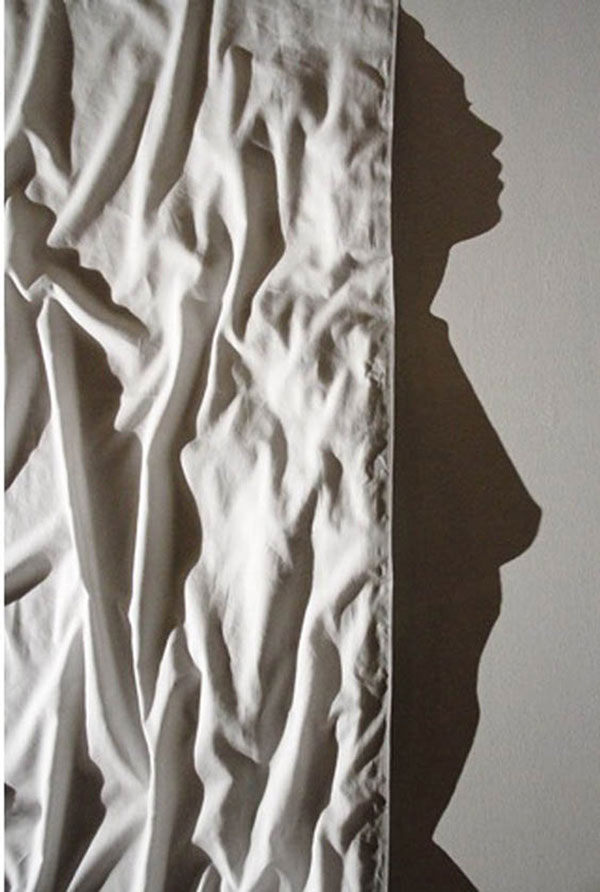
(Image source: www.kumiyamashita.com)
At first glance, her work seems to display human silhouettes; however, upon closer inspection you realize they are actually an assortment of simple materials such as, wood blocks, fabric, sheets of paper or aluminum, and stainless steel plates attached to walls. What makes these everyday objects extraordinary, is the way the strategically placed light source shines on them at just the right angle, transforming the materials into something greater.
The key to appreciating her work is perspective and imagination. The display may seem haphazard and chaotic at first, but every single piece plays an important role, with the combined shadows creating an unexpected visual.
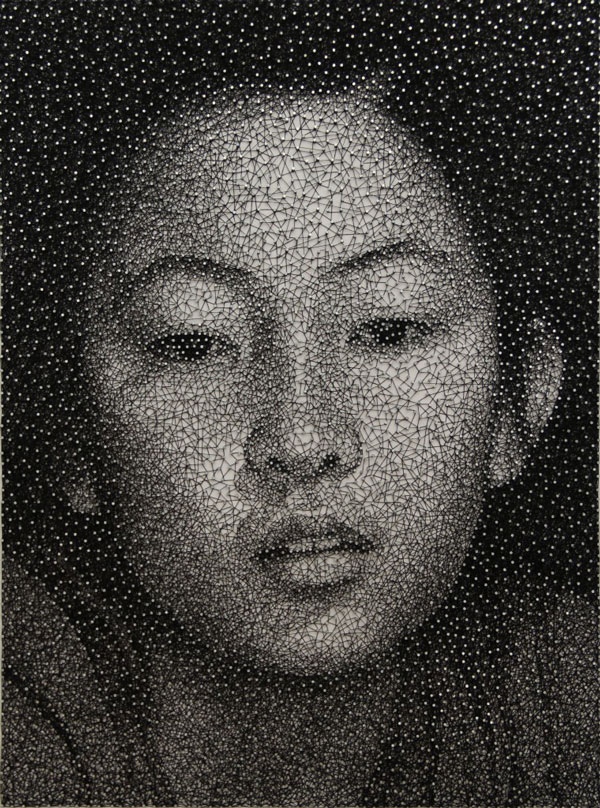
(Image source: www.kumiyamashita.com)
Attention to detail is paramount. Especially in her work titled, Constellation-Mana. What’s essentially a portrait of her niece, is actually a compilation of more than 10,000 tiny nails and a single sewing thread. The nails are secured onto a white painted wooden platform with the thread used to create the overall image.
By focusing on the human figure, Kumi carefully evokes a range of emotions where realistic characters come to life from inanimate objects.
What fuels her passion
Kumi’s biggest influence comes from being born and raised in Japan. Japanese minimalist aesthetics strip things down to their essence, while Japanese artisan culture prides itself on expert craftsmanship. Both themes are increasingly prevalent in her work.
And, she is compelled to continue creating. Nothing fulfills her quite like being involved in the act of making something and sharing it with others. Her innate desire to connect and communicate is enabled through her art, opening up channels for interaction with others.
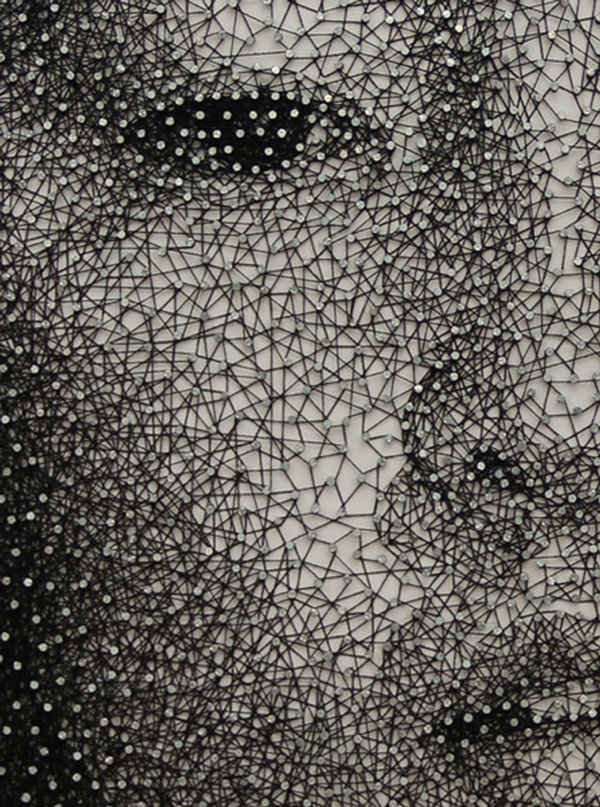
(Image source: www.kumiyamashita.com)
By “staying curious and keeping an open mind”, she breaks out of her comfort zone to create fresh work. This includes exposing herself to new things “either through travel or reading or seeing theater or just talking with others and hearing their stories”.
The ongoing experiment
Because Kumi’s artwork is dependent on the location she displays it at, she begins each piece with working on sketches that perfect the composition and scale of the final display. This is because it is crucial for the artwork to inhabit the space in a balanced way.
What’s more, her biggest challenge is making the shadows look natural and impart a sense of energy or emotion. If you think about it, looking at a live person rest their hand on their knee looks natural. However, if you reduce that image to simply shadows and outlines, it may look as if a mushroom is growing off of their leg. Therefore, in order to ensure her final images look as realistic and organic as possible, she photographs posed models and then uses the images as references for her sketches.
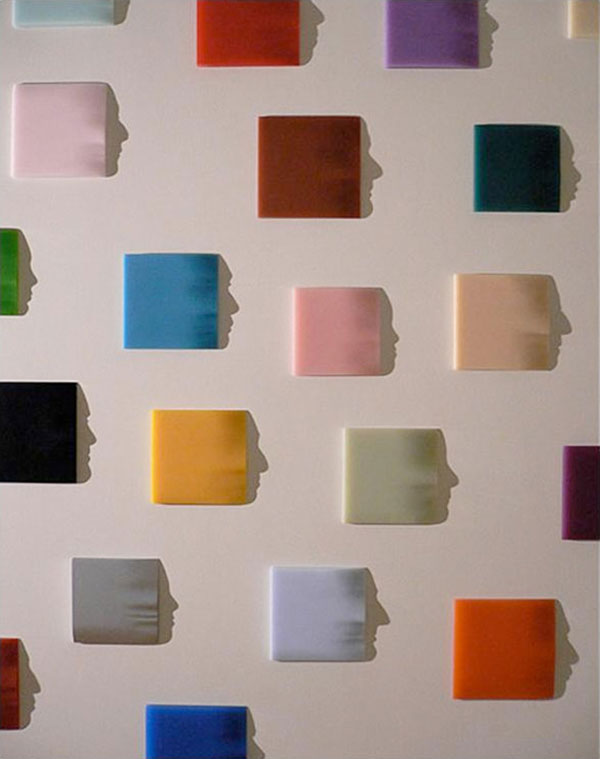
(Image source: www.kumiyamashita.com)
Once the composition is finalized, she is tasked with choosing the appropriate light. Different bulbs have different qualities. Some will cause shadows to double, some will cause shadows to blur, while others will produce very crisp shadows. The only way to determine the right light source is through trial and error.
After a series of light tests, she is finally able to begin crafting the sculpture, which might entail carving a piece of wood or working with many different objects to create the desired effect. The entire process is one long continuous experiment.
…an experiment that hasn’t gone without notice.
Accolades and future work
Kumi’s work has been featured in many different solo shows at prestigious venues such as the Kent Gallery in New York and the Roswell Museum and Art Centre in New Mexico. She has also taken part in a number of group shows including, Figurative Association at the Arrowmont School of Arts in Tennessee and String Theory at the Scott White Contemporary Art Gallery in California.
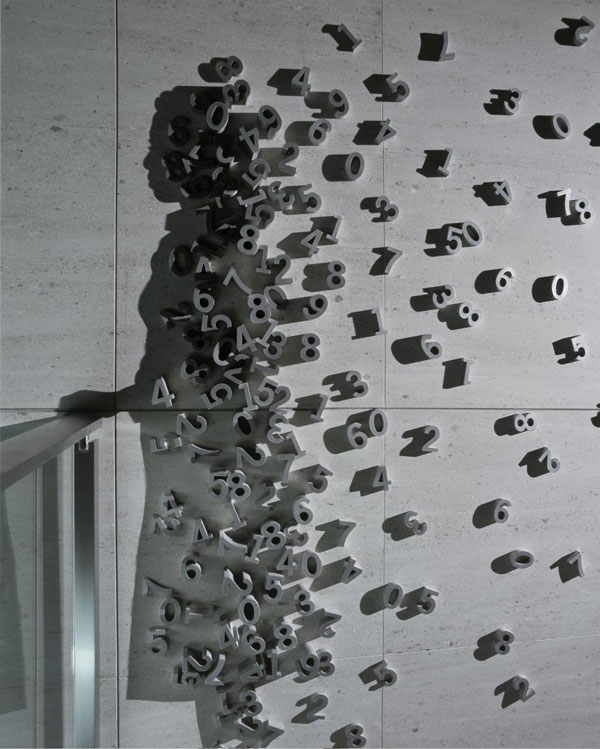
(Image source: www.kumiyamashita.com)
Going forward, Kumi is working on a new project titled, Unfolding Cosmos. In it, she uses uniform squares of black paper, folded into a variety of origami shaped animals, flowers, peoples and objects. The squares are then unfolded and connected together creating a larger square. She finds it fascinating that, “an infinite variety of shapes can come from a single element, in this case a simple square sheet of paper. When you unfold these figures, you are left with lines that seem to extend beyond the paper’s realm.” When assembled into a larger whole, the crinkled lines create blurred boundaries and multiple intersections that connect with one another, similar to the philosophy behind her artwork thus far.
